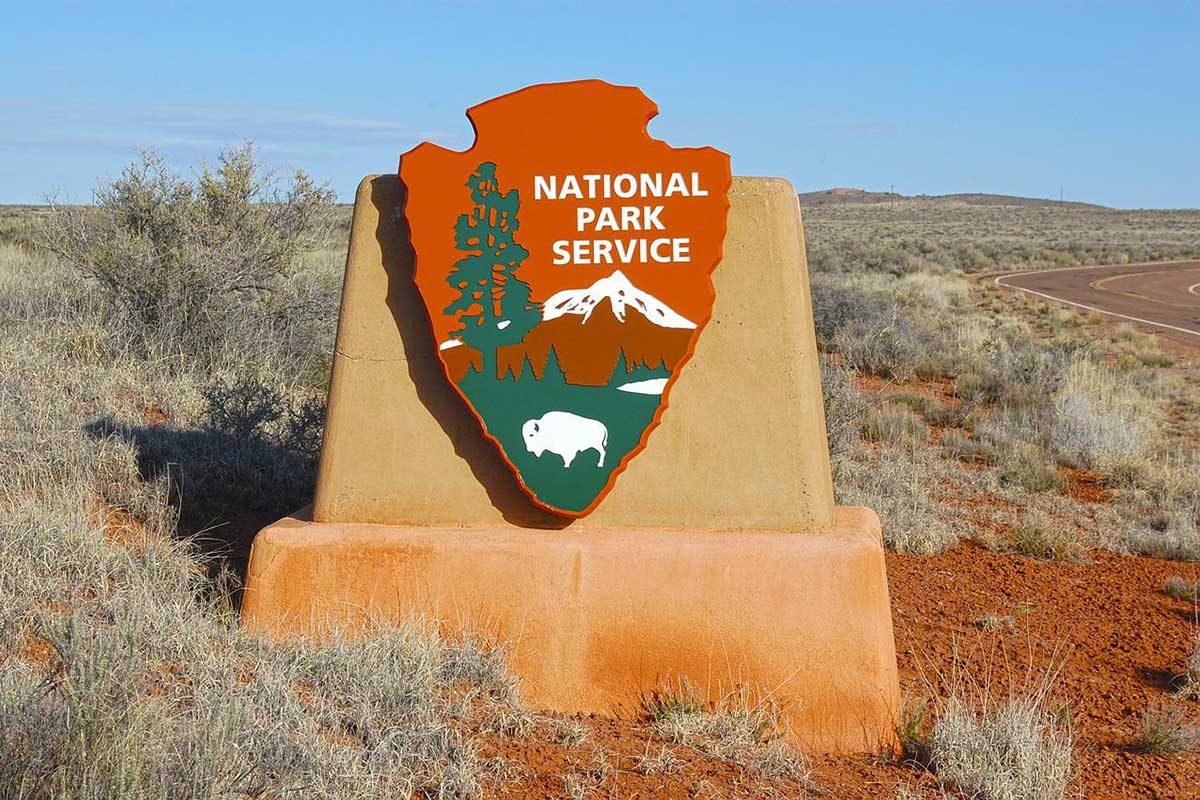Although the high season of most National Parks is during the summer, there’s a park worth visiting every month of the year. If you want to know the best National Parks to visit by month, this article breaks it all down for you. Learn where to stay, temperatures to expect, why you’ll want to visit, and what to look out for to ensure your trip is the best possible.
If you’re planning to visit a national park (or two!) each month, don’t forget to grab your America the Beautiful National Park Pass. For one price, you can get into all national park sites over a 12-month period. The pass is much cheaper even if you just visit 2 or 3 parks in the year.
There are currently 63 national parks in the United States with more always being added. These parks are all over the country in a wide variety of climate zones, making seasonal travel something to consider. The following list contains some ideas for some of the best national parks to visit, broken down by month.
Best national parks to visit by month
There are plenty of reasons to visit a national park any month of the year. But some parks have better perks than others depending on the season. Find out which ones!
January
1. Yellowstone National Park
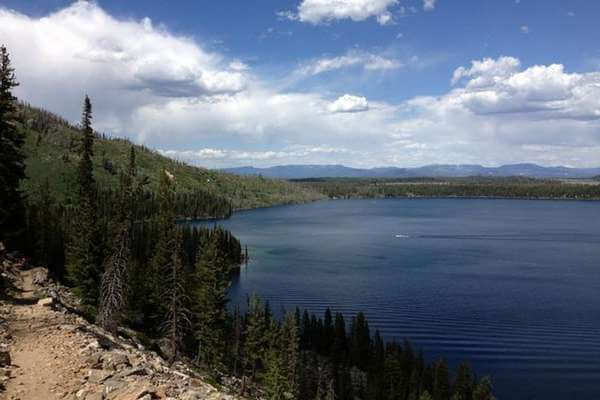
- Location: Wyoming, Montana, and Idaho
- Temperature: 3-30°F
- Where to stay: There are hotels in the park or take a day trip from Jackson, Wyoming.
Visiting Yellowstone in January lets you enjoy the steam and ice scenery crowd-free. It’s a great time for wildlife viewing at lower elevations, especially bison, wolves, bighorn sheep, and elk. You can also go snowshoeing, country skiing, and ride heated snow coaches.
| Pros | Cons |
|
|
2. Rocky Mountain National Park
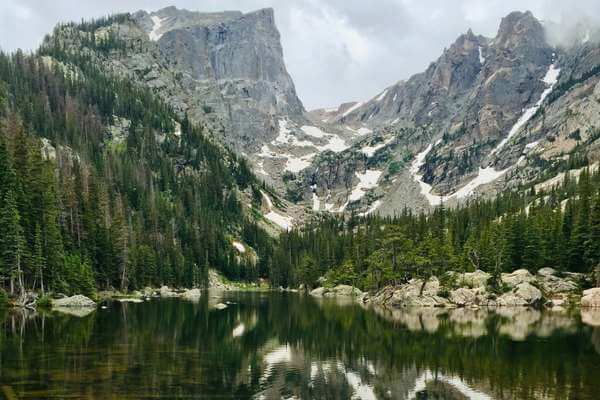
- Location: Colorado
- Temperature: 12-30°F
- Where to stay: In nearby Estes Park since there are no lodgings in the park.
Enjoy the winter landscapes, wildlife viewing, and snow activities, such as snowshoeing and skiing. The park also offers one of the prettiest winter trails to Nymph, Dream, and Emerald Lakes.
| Pros | Cons |
|
|
3. Haleakala National Park
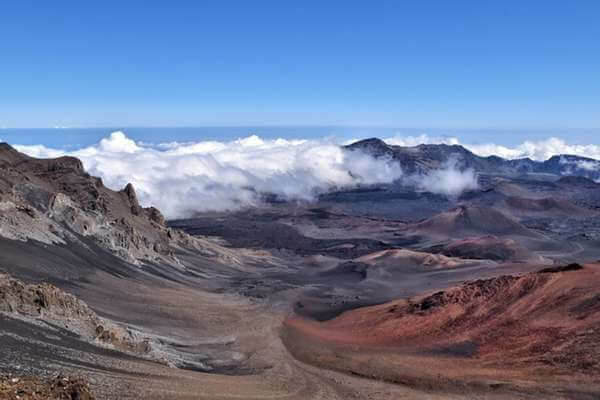
- Location: Maui, Hawaii
- Temperature: 60-80°F
- Where to stay: Anywhere on Maui with the Wailea area a popular choice.
Miss the Christmas crowd to enjoy the park, Maui island, and see humpback whales. Take a tour to visit the famous sunrise spot at the summit of the extinct volcano, Haleakala, and go hiking, zip-lining, or biking.
| Pros | Cons |
|
|
February
1. Arches National Park
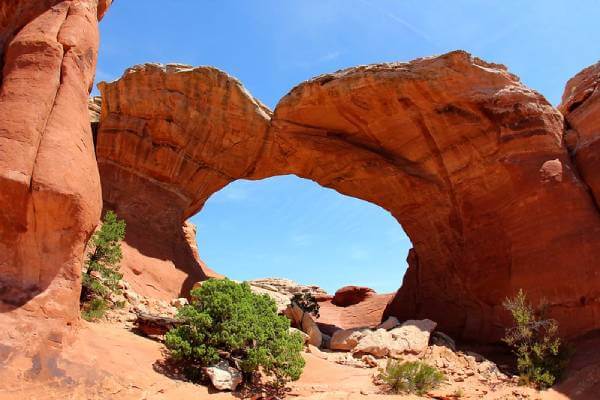
- Location: Utah
- Temperature: 28-52°F
- Where to stay: Hotels and lodgings in and around Moab, such as the Archway Inn.
Experience ever-changing landscape scenes, where one day is blue skies and the next a thin layer of white snow across the red landscapes. You can still do popular attractions like the Arches Scenic Drive and Delicate Arch trail.
| Pros | Cons |
|
|
2. Yosemite National Park
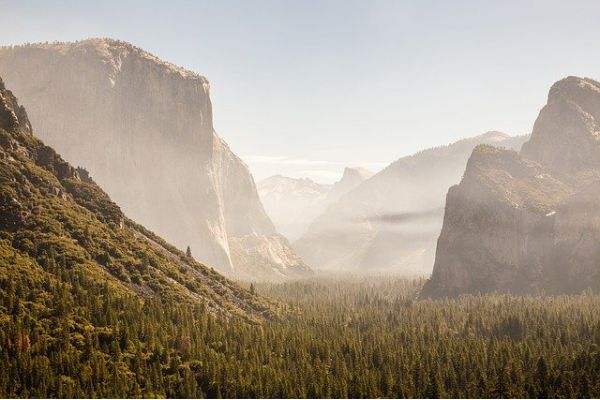
- Location: California
- Temperature: 30-53°F
- Where to stay: There are cabins, hotels, and vacation homes inside the park as well as places near the park entrance.
Enjoy beautiful snowy vistas, including snow-capped valleys and snow-covered Half Dome. Most of the popular hikes at Yosemite National Park, such as Bridalveil Fall and Mirror Lake, are still open and outdoor winter activities, such as ice skating, skiing, and snowboarding are plentiful.
| Pros | Cons |
|
|
3. Hawaii Volcanoes National Park
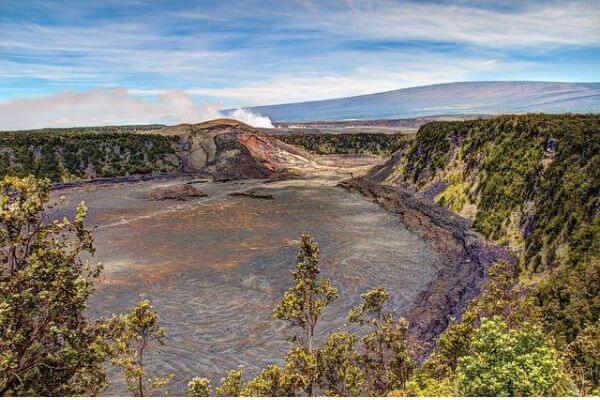
- Location: Hawaii Island
- Temperature: 49-70°F
- Where to stay: Anywhere on the island but book in advance
Visiting Hawaii Volcanoes National Park on the Big Island in February means mild weather and the driest month, averaging one day of rain. It’s a great escape from cold weather to see lava fields, scenic drives, snorkeling, and to visit Nāhuku – the Thurston Lava Tube.
| Pros | Cons |
|
|
March
1. Big Bend National Park
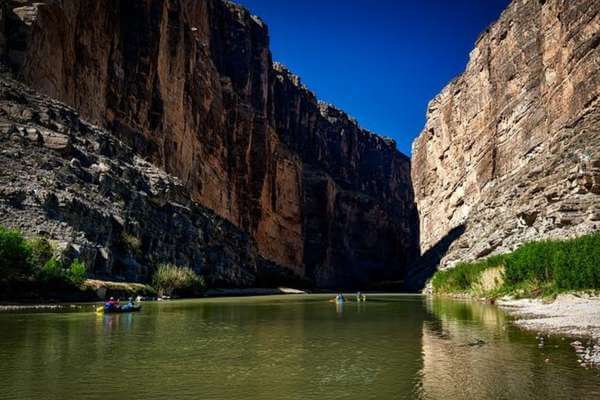
- Location: Texas
- Temperature: 50-70°F
- Where to stay: Inside the park at Chisos Mountains Lodge or accommodations nearby
March is the peak season because of the perfect weather for hiking and camping at the various elevations in the park. It’s also bluebonnet bloom season and the weather is cool enough to enjoy the hot springs.
| Pros | Cons |
|
|
2. Everglades National Park
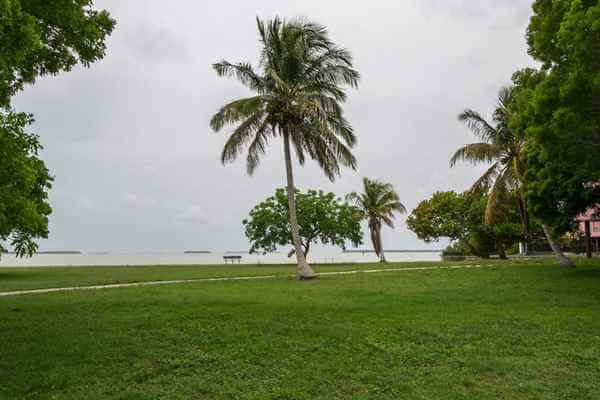
- Location: Florida
- Temperature: 67-78°F
- Where to stay: In Miami or Everglades City and visit the park as a day trip
Clear skies, dry weather, and almost no mosquitoes make march an attractive time to visit the Everglades. You can go biking, hiking, rent a canoe, or take an airboat tour to spot wildlife that gathers around the remaining waterholes, including a wide variety of birds.
| Pros | Cons |
|
|
3. Hot Springs National Park
- Location: Arkansas
- Temperature: 40-64°F
- Where to stay: Hot Springs town has various hotels, cabins, and bed & breakfasts.
The main attractions are the hot springs so the cooler weather makes it a great time to take a soak. You can also go hiking, enjoy mountain views, and visit the historic bathhouses located in the town.
| Pros | Cons |
|
|
April
1. Shenandoah National Park
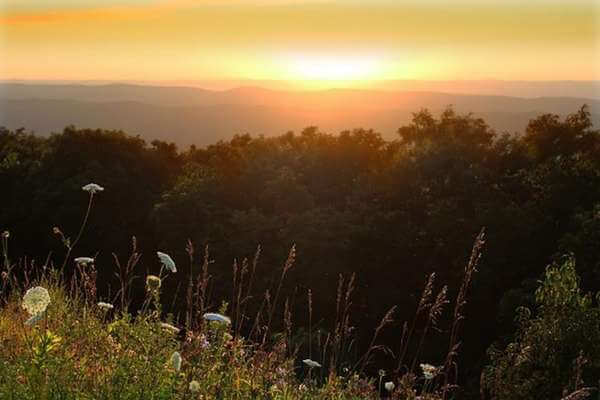
- Location: Virginia
- Temperature: 36-56°F
- Where to stay: Lodges along Skyline Drive in the park or stay in Luray to the north.
There are fewer crowds, blooming trees, and wildflowers, and the waterfalls are amazing from the rains. The park spans 100 miles with different elevations so varying weather in different parts means there’s always something fun to do.
| Pros | Cons |
|
|
2. Zion National Park
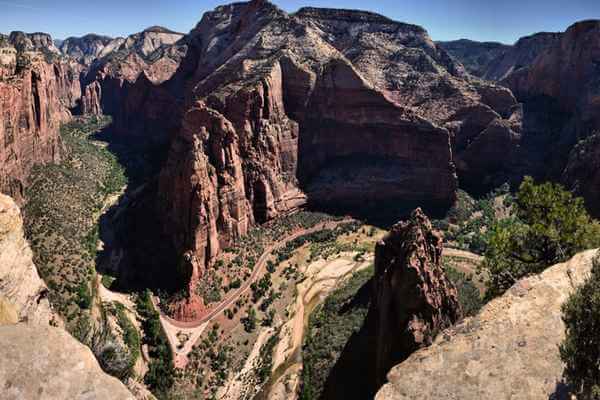
- Location: Utah
- Temperature: 43-73°F
- Where to stay: Zion Lodge is the only in-park accommodation but the Springdale hotel is also at the entrance.
Experience the contrast of snow on the high mountain peaks and warm temperatures inside the canyons. Generally, the weather is ideal for hiking and outdoor activities. It’s also a drier month to enjoy the wildflower blooms.
| Pros | Cons |
|
|
3. Grand Canyon National Park
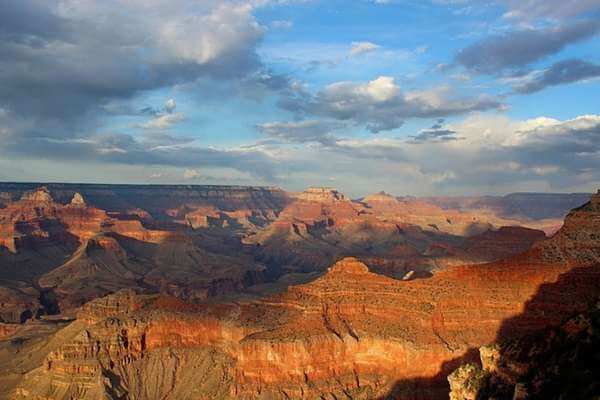
- Location: Arizona
- Temperature: 32-60°F
- Where to stay: Grand Canyon Village at the South Rim has several nice hotels.
The pleasant weather at all elevations makes it great for longer hikes inside the canyon. You can also enjoy various tours, such as fixed-wing tours, helicopter tours, bicycle tours, and Colorado river rafting tours.
| Pros | Cons |
|
|
May
1. Bryce Canyon National Park
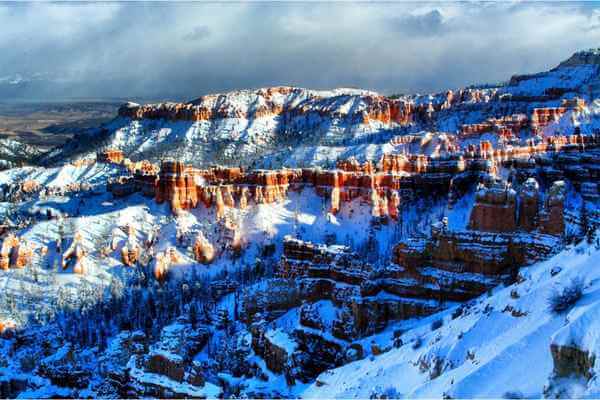
- Location: Utah
- Temperature: 33-63°F
- Where to stay: The lodge in the park opens in May but you can also stay in Bryce.
It’s the beginning of the best times to visit and hike the canyon’s higher elevation. Enjoy the various viewpoints along the rim and the orange rock columns called hoodoos. Easily combine a trip here with nearby Zion National Park.
| Pros | Cons |
|
|
2. White Sands National Park
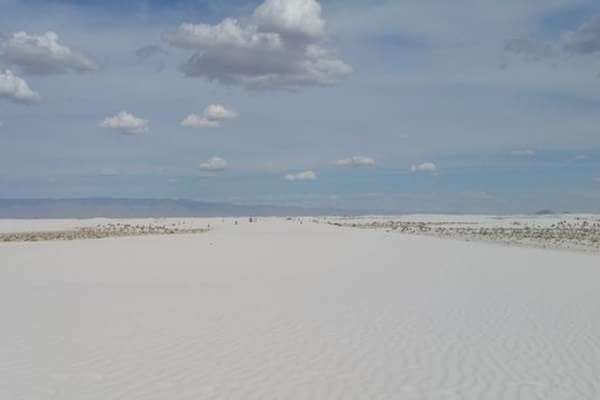
- Location: New Mexico
- Temperature: 40-75°F
- Where to stay: Alamogordo city is the closest or you can stay in Las Cruces.
Enjoy sunny days and cool evenings. Although you have to watch out for sandstorms, it also allows you to see incredible shifting sand creations. Close by are also the Guadalupe and Carlsbad Caverns National Parks.
| Pros | Cons |
|
|
3. Joshua Tree National Park
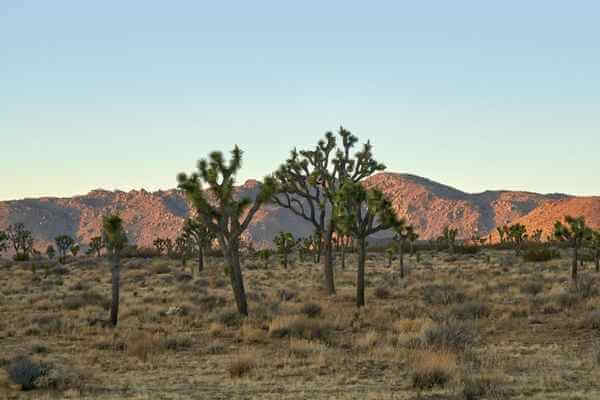
- Location: California
- Temperature: 55-86°F
- Where to stay: There is only camping in the park but there are plenty of options by the entrances.
Visit before it gets too hot to enjoy the various outdoor activities and desert landscapes, including boulders and the slow-growing Joshua tree. Some of the best things to do are biking, hiking, rock climbing, stargazing, and horseback riding.
| Pros | Cons |
|
|
June
1. Denali National Park
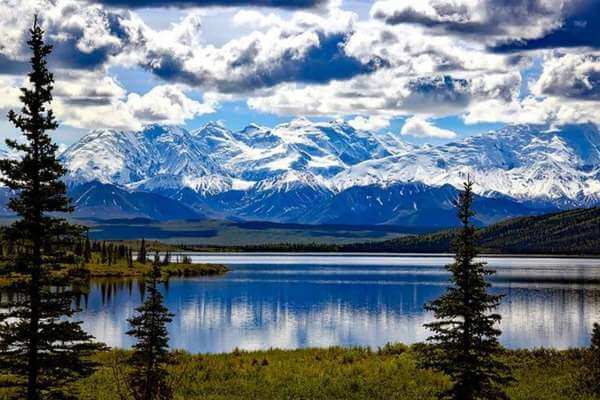
- Location: Alaska
- Temperature: 40-65°F
- Where to stay: There are several lodges inside the park, like Denali Backcountry Lodge.
Summer has the mildest weather and the first half of June lets you beat the crowds. It’s also when the landscape begins to turn green, wildflowers start blooming, migratory birds arrive, and other wildlife are active with their cubs.
| Pros | Cons |
|
|
2. Acadia National Park
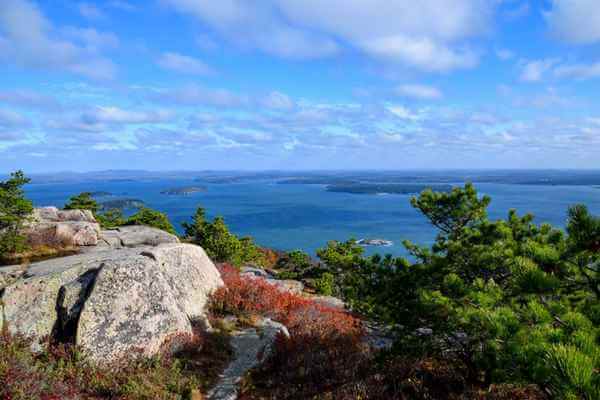
- Location: Maine
- Temperature: 50-70°F
- Where to stay: Accommodations in and around the park, including the Atlantic Oceanside Hotel and Acadia Hotel.
It’s right before peak season to experience the rugged coastlines, sweeping vistas, and charming towns in and around the park. See lilacs and lupine flowers bloom while you enjoy the hiking and biking trails. Bar Harbor Maine is the gateway town to this national park.
| Pros | Cons |
|
|
3. Sequoia National Park
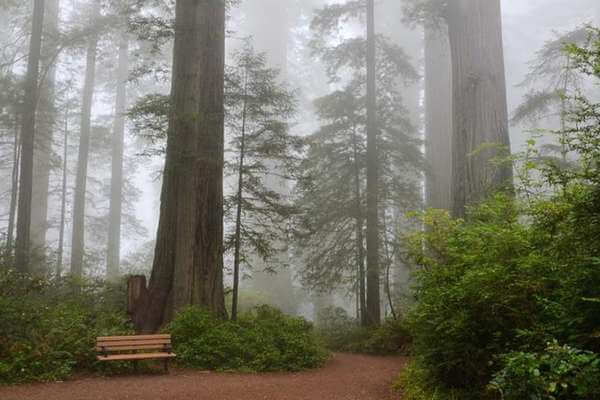
- Location: California
- Temperature: 34-65°F
- Where to stay: There are lodges and campgrounds in the park and other accommodations nearby.
The daytime weather is perfect for hiking at higher elevations and exploring the big trees, deep canyons, and all-around stunning scenery. Also, visit the nearby Kings Canyon National Park to drive the scenic road between Grant Grove to Cedar Grove.
| Pros | Cons |
|
|
July
1. Yellowstone National Park
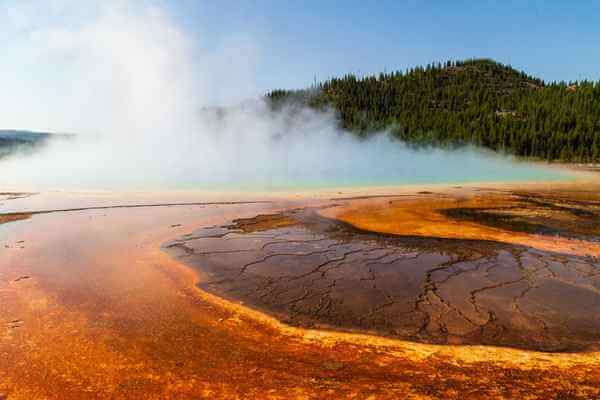
- Location: Idaho, Montana, and Wyoming
- Temperature: 39-73°F
- Where to stay: There are 9 lodgings in the park, including the famous Old Faithful Inn
If you don’t mind facing the crowds, it’s time to experience the entire park without any limitations or road closures. The over 1,000 miles of trails are open and you can enjoy wildlife, waterfalls, fishing, and kayak tours.
| Pros | Cons |
|
|
2. Great Smoky Mountains National Park
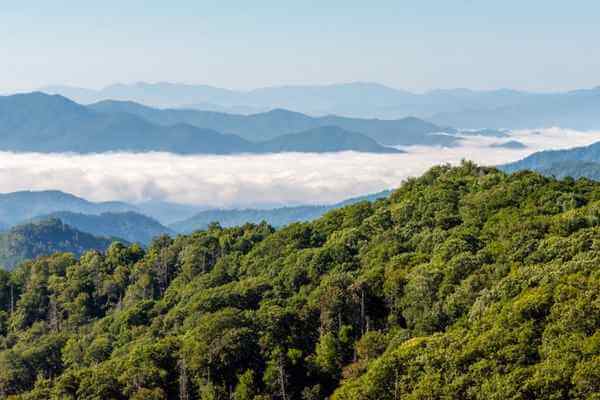
- Location: North Carolina and Tennessee
- Temperature: 59-88°F
- Where to stay: Le Conte Lodge in the park or the towns of Gatlinburg or Townsend.
All the popular routes are open and plenty of outdoor activities to enjoy, from hiking to water rafting. Also, experience cultural demonstrations, guided walks, and historic mill demonstrations. Avoid the crowds in less popular areas like Cataloochee and Balsam Mountain.
| Pros | Cons |
|
|
3. the Channel Islands National Park
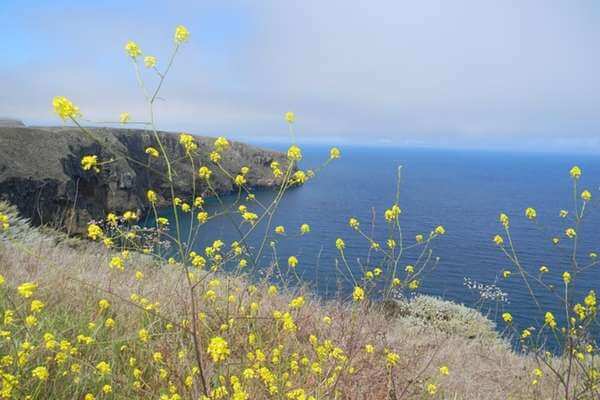
- Location: California
- Temperature: 50-75°F
- Where to stay: There are only campgrounds in the park but you can stay in Oxnard or Ventura to catch the boat there.
Experience the best range of activities, including parasailing, snorkeling, hiking, sailing, diving, and kayaking. It’s also the best month to see blue and humpback whales, California sea lions, Northern fur seals, and plenty of seabirds.
| Pros | Cons |
|
|
August
1. Glacier National Park
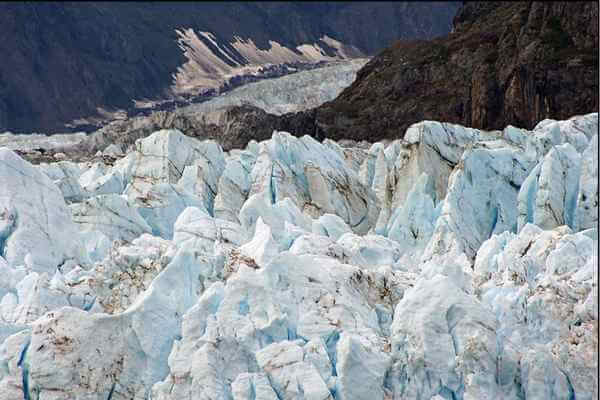
- Location: Montana
- Temperature: 48-80°F
- Where to stay: Camp in the park or stay at the towns of Columbia Falls, Whitefish, Kalispell, or Bigfork.
Enjoy mostly pleasant weather and the Going-to-the-Sun Road is fully accessible. It’s a great time to visit for camping, hiking, kayaking, and viewing lush green scenery in the sunshine.
| Pros | Cons |
|
|
2. Grand Teton National Park
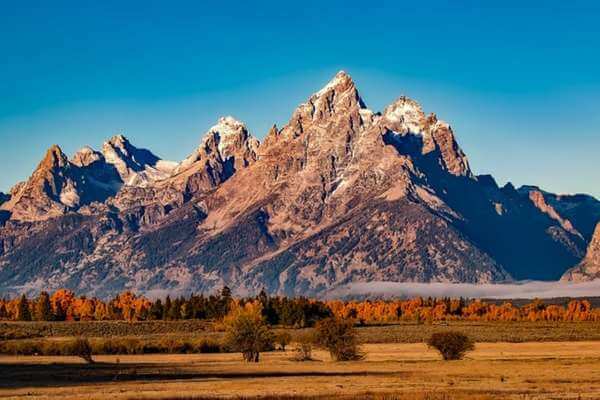
- Location: Wyoming
- Temperature: 39-76°F
- Where to stay: Accommodations in the park or in the town of Jackson
The summer water temperatures let you go scenic rafting, fishing, canoeing, paddleboarding, and more. The camping, hiking, and wildlife viewing are also great during this time.
| Pros | Cons |
|
|
3. Rocky Mountain National Park
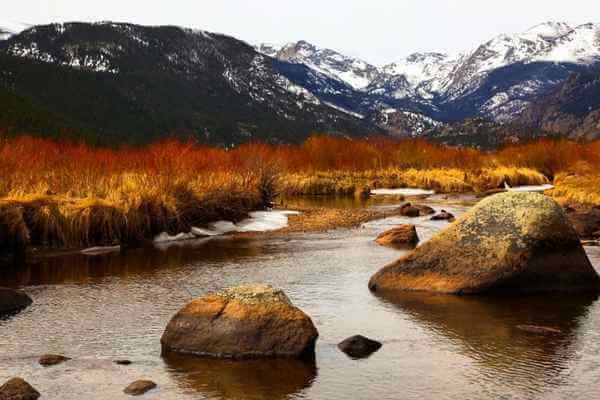
- Location: Colorado
- Temperature: 44-65°F
- Where to stay: Estes Park is nearby since there are no lodgings in the park.
Experience spectacular views at Trail Ridge Road and some of the best hiking with nicer weather. You can also go fishing, rock climbing, and take scenic drives. For fewer crowds visit the Park’s westside entrance which also features plenty of wildlife viewing.
| Pros | Cons |
|
|
September
1. Mount Rainier National Park
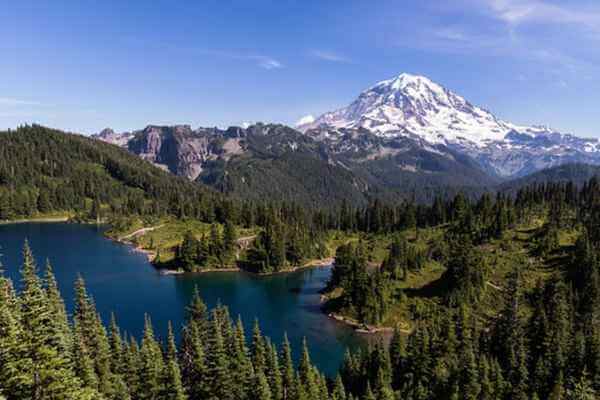
- Location: Washington
- Temperature: 45-74°F
- Where to stay: The park has inns such as Paradise Inn and National Park Inn
Summer crowds are gone but the weather is still mild and ideal for outdoor activities and experiencing the temperate inland rainforest. It’s also snow-free so areas such as Chinook Pass and the Skyline trail are still open to exploring.
| Pros | Cons |
|
|
2. Acadia National Park

- Location: Maine
- Temperature: 48-60°F
- Where to stay: Lodges on the park grounds or the nearby Bar Harbor
After Labor Day weekend the park becomes crowd-free and the weather is still warm enough to swim in the lakes or hike. Fall colors are abundant when you drive up Cadillac Mountain or Park Loop Road.
| Pros | Cons |
|
|
3. Grand Canyon National Park
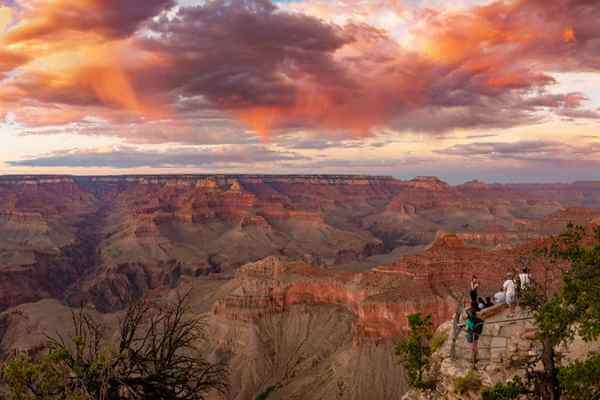
- Location: Arizona
- Temperature: 43-76°F
- Where to stay: Camp in the park or stay at Grand Canyon Village
It’s prime hiking, backpacking, and rafting season and the beginning of the month still brings summer temperatures. You can also camp on both rims and enjoy the various tours, such as helicopter rides.
| Pros | Cons |
|
|
October
1. Great Smoky Mountains National Park

- Location: North Carolina and Tennessee
- Temperature: 38-65°F
- Where to stay: Le Conte Lodge in the park or the towns of Gatlinburg or Townsend.
Enjoy the beautiful fall foliage, Smoky Mountain Harvest Festival, scenic drives, and outdoor activities like fly fishing and ziplining. There is also plenty of wildlife viewing, including the iconic black bears that aren’t hibernating yet. Great Smoky Mountains National Park is far and away from the most visited national park in the country.
| Pros | Cons |
|
|
2. Canyonlands National Park
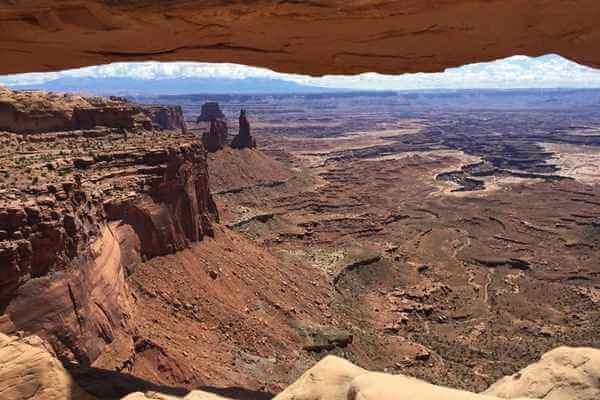
- Location: Utah
- Temperature: 38-70°F
- Where to stay: Hotels and lodgings in and around Moab, such as the Archway Inn.
The moderate temperature is great for hiking, biking, and river activities or exploring the deep canyons and sandstone cliffs. There’s also no traffic congestion when visiting the different districts, including Island in the Sky.
| Pros | Cons |
|
|
3. Shenandoah National Park
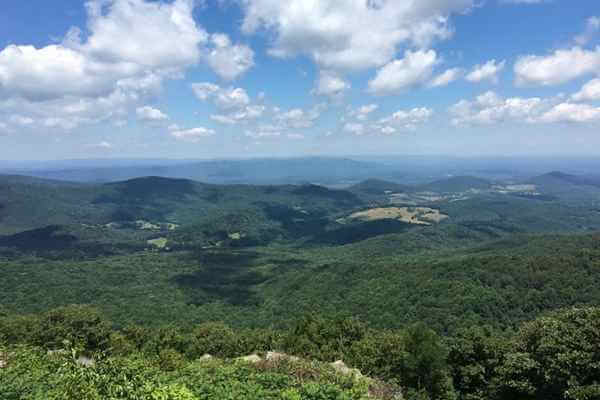
- Location: Virginia
- Temperature: 39-58°F
- Where to stay: Lodges along Skyline Drive in the park or stay in Luray to the north.
The fall colors shine in this part of Appalachia and the weather is great for camping and hiking. If you want fewer crowds, plan to visit the northern sector where you’re more off the beaten path.
| Pros | Cons |
|
|
November
1. Dry Tortugas National Park
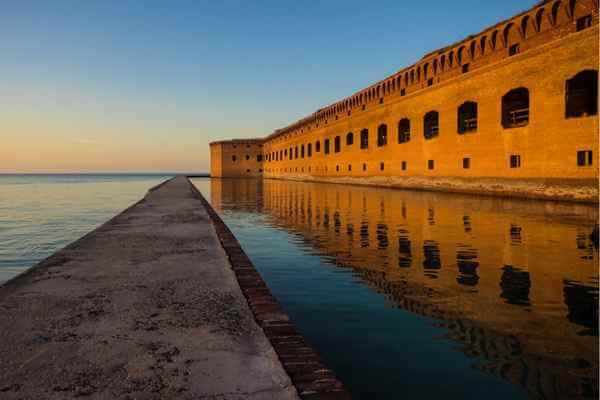
- Location: Florida
- Temperature: 70-79°F
- Where to stay: There is only camping in the park but you can stay in Key West for a day trip.
You can catch the cooler weather and dry season with less rain and humidity for camping, hiking, and snorkeling. Fort Jefferson on Garden Key island is also worth a visit!
| Pros | Cons |
|
|
2. Olympic National Park
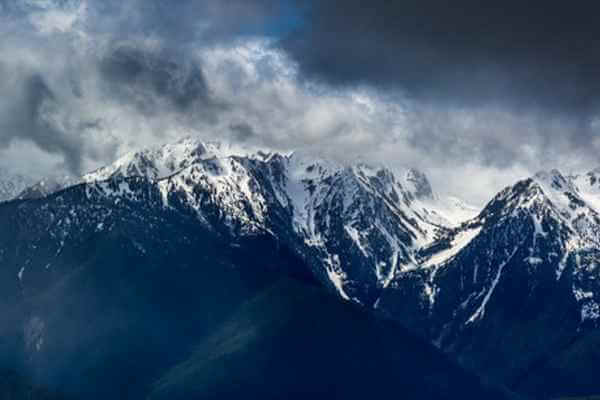
- Location: Washington
- Temperature: 36-46°F
- Where to stay: There are various lodges and cabins inside the park.
Experience the diverse ecosystems of the park from coastal areas to temperate rainforests and hike or lounge at the beach. It’s also the best time to see grey whales from Shi Shi beach and other wildlife like elk.
| Pros | Cons |
|
|
3. Zion National Park
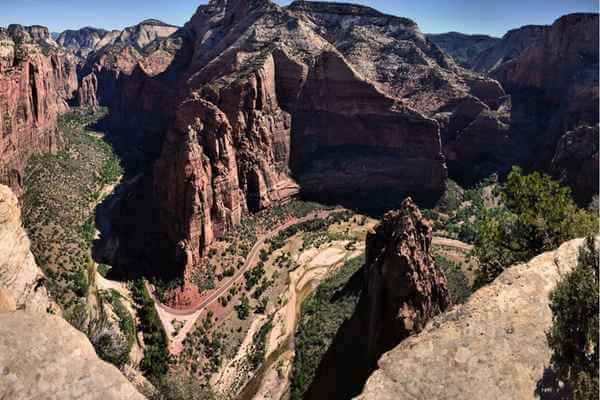
- Location: Utah
- Temperature: 31-56°F
- Where to stay: There are 3 campgrounds and Zion Lodge in the park.
See autumn-colored leaves contrasting against the sandstone cliffs while also having the potential of first snowflakes dusting the landscape. Most of the popular hikes like Emerald Pools and Angels Landing are also still open.
| Pros | Cons |
|
|
December
1. Gateway Arch National Park
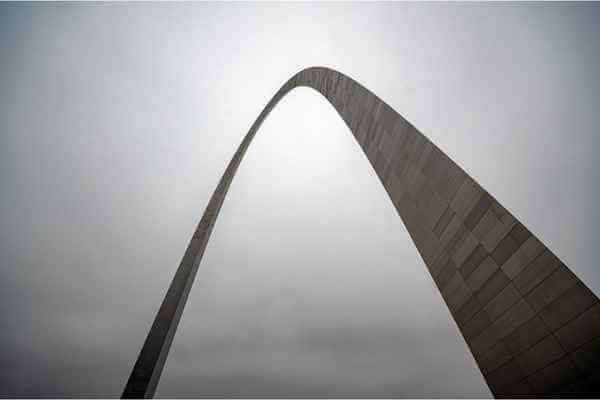
- Location: Missouri
- Temperature: 25-44°F
- Where to stay: Multiple hotels are in downtown St. Louis right by the park.
All the main attractions are indoors so you can avoid the cold by taking a tram ride to the top of the arch or visiting the museum. The Christmas spirit is also high in town, whether you go on a dinner river cruise or ice skating at the Winterfest at the Arch.
| Pros | Cons |
|
|
2. Death Valley National Park
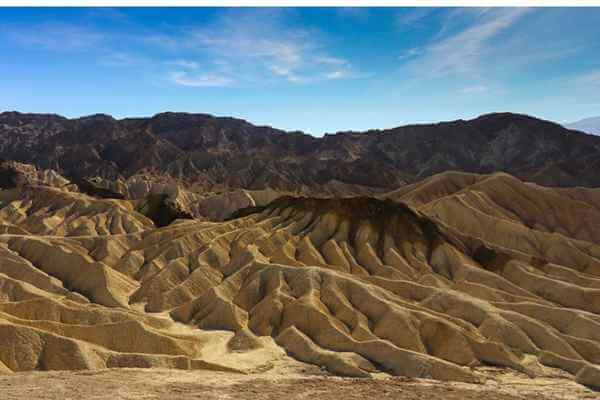
- Location: Eastern California
- Temperature: 39-65°F
- Where to stay: There are 3 hotels in the park but you can also take day tours from Las Vegas.
Enjoy the cooler weather of visiting the hottest place on earth so you can make the most of hiking, camping, and stargazing during night explorations. You can also go on a self-guided Star Wars driving tour or visit Badwater Basin and Artists Drive.
| Pros | Cons |
|
|
3. the Great Smoky Mountains National Park

- Location: North Carolina and Tennessee
- Temperature: 21-44°F
- Where to stay: Le Conte Lodge in the park or the towns of Gatlinburg, Townsend, or Pigeon Forge.
It’s a winter getaway with frozen waterfalls and wildlife viewing in Cades Cove valley. You can also go ice skating, skiing, snowboarding, or hiking along some trails still open. Not to mention the winter festivals and crafts in nearby towns. The city always decorates the strip with Christmas lights and snowflakes making it a magical time to visit. If you’re lucky it might even snow!
| Pros | Cons |
|
|
